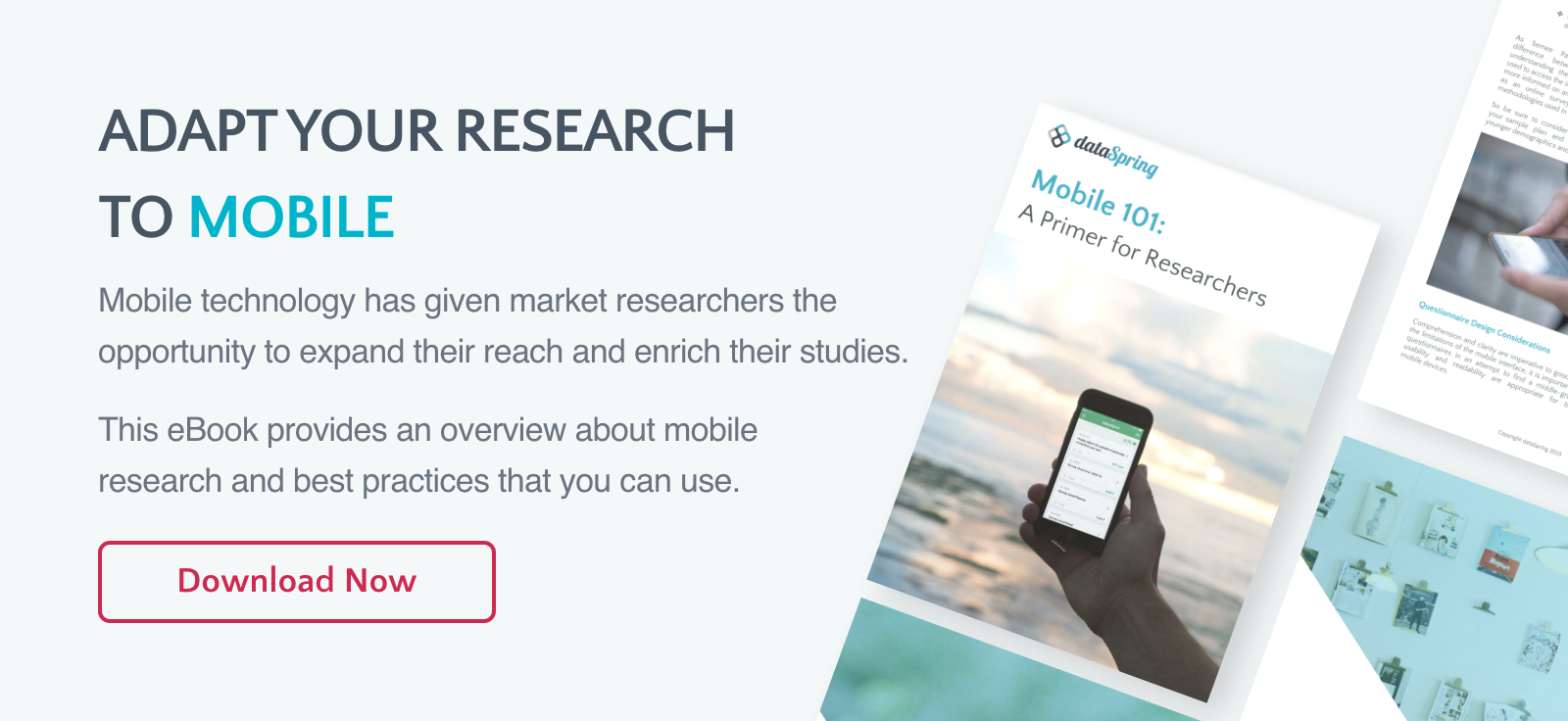A properly designed and optimized mobile research survey will deliver powerful insights from your Asian respondents.

In our previous article, we explained the potential of mobile research surveys in Asia and how the availability of several quality mobile panels in the region works in favor of the market researcher. With so many mobile users connected online in Asia, this kind of survey can reap a wealth of valuable insights to help business decision-makers adapt to the diverse needs and wants of local consumers.
However, there are several caveats when conducting mobile research in Asia, from language barriers to possible misunderstandings due to the region’s rich cultural diversity. In this blog entry, we’ll provide you with ways to overcome these hurdles and make mobile surveys satisfying for both market researchers and respondents. Conducting mobile research in the region can be very effective if done right.
- 1. Keep it short and simple
- Shorter mobile content is always better, and in this case, simpler phrasings will be understood easier by Asian respondents. Additionally, simplifying your survey without compromising your objectives allows your translators to localize your study properly and provide the right cultural context for you and your respondents. The shorter and simpler your survey will appear, the more likely you’ll retain your Asian respondents.
On a general note, the screen space of a mobile device is a lot smaller than desktop devices so a survey that may look short on paper or on screen may look longer on a mobile device. You should try to visualize and frame your questions as if you’re viewing them on mobile devices. Keep them short so that they can be viewed without requiring your respondents to zoom in, scroll down the page, or tilt their mobile devices horizontally. For example, if you’re asking for your respondent’s gender, you don’t have to frame the question as “What Is your gender?” A simple "Gender" will suffice. - 2. Make it mobile-optimized
- Some countries in Asia have insufficient mobile infrastructure, so there is some significant lag in connectivity in parts of the region. If you want more respondents in Asia to receive and read your survey, you should learn how to optimize it and make it more accessible. Additionally, there are many Android users in Asia, so if you have survey features that cannot work on basic Android devices, you might have respondents who will have difficulty answering it. Finally, keep in mind that pages or apps with heavy video or interactive elements can drain battery life and expend mobile data, so you have to use them wisely.
One effective way of mobile-optimizing your survey is breaking it up into small sections so that your respondents can focus on your survey through a smaller screen. In this setup, questions must be arranged in a logical manner to make it easier for your respondents to organize their thoughts and navigate the survey. - 3. Avoid fancy features
- Fancy features like sliders and click wheels might look good and enticing in online surveys, but when it comes to mobile devices, they may be harder to interact with since they require a higher degree of dexterity. Additionally, their load time on mobile devices might be longer, or they might not even load at all due to compatibility issues. It’s better for you to use the simplest answering formats, such as check boxes and text boxes. They will be much easier for respondents to read and interact with.
- 4. Minimize device scrolling
- Continuous scrolling on mobile devices can affect the respondents’ experience. It makes them exert more effort in completing your survey, and there is a possibility that they might push another button or swipe to another page, which can frustrate them even more.
There are two types of scrolling that you must be aware of. The first one is related to interlinking survey items, or questions that are followed-up with related questions. In this situation, your respondents will need to scroll back and forth to check their previous answers. It is both time-consuming and frustrating on mobile, so avoiding interlinked questions altogether is highly recommended.
The second instance of scrolling happens with single questions that have drop-down menus or selections that extend beyond the length of the mobile device screen. If an item requires a respondent to scroll down to read and answer, then it’s too long in mobile format. - 5. Test, test, test
- Before sending your survey to your respondents in Asia, always check your survey if it’s suitable for distribution. You must check if the survey is compatible with most mobile devices and operating systems and if the survey appears onscreen as you intended.
You should also check if your respondents will be able to complete the survey. It is highly recommended to send out a survey sample to a small number of respondents for testing to check for quality. You should check your survey for errors, offensive/taboo content, and bias.
Due to advances in mobile device technology and widespread adaption of mobile phones for online access, especially in Asia, mobile research has become a powerful tool for market researchers to harness. If you want to know more about mobile research, how to enhance your methodology toolbox, and Asia mobile panels, check out our Mobile Research Essentials page.


 Download Panel Book
Download Panel Book


